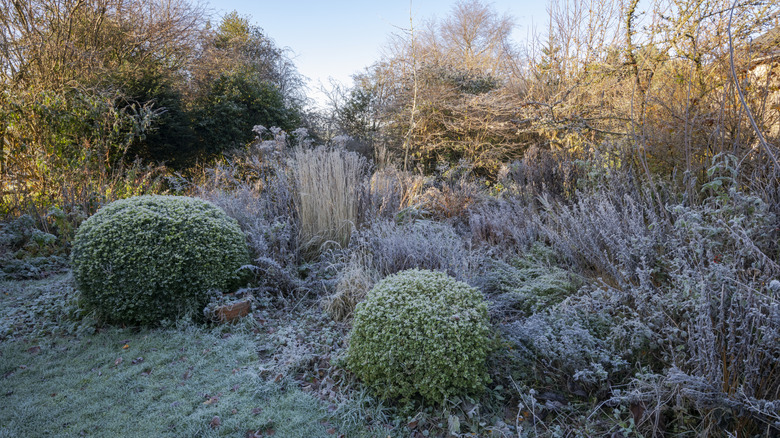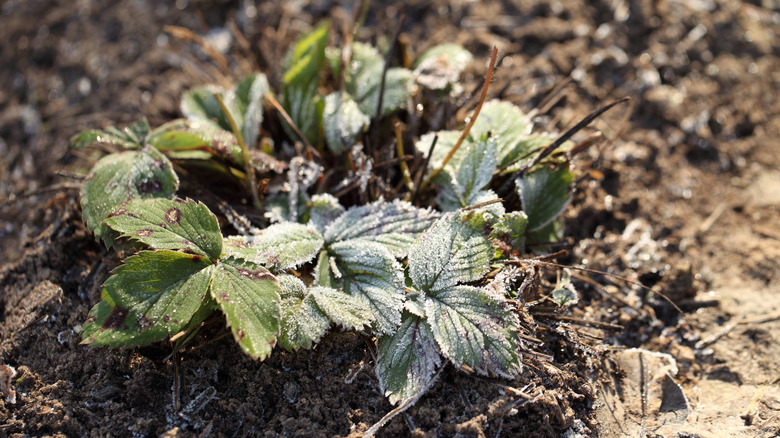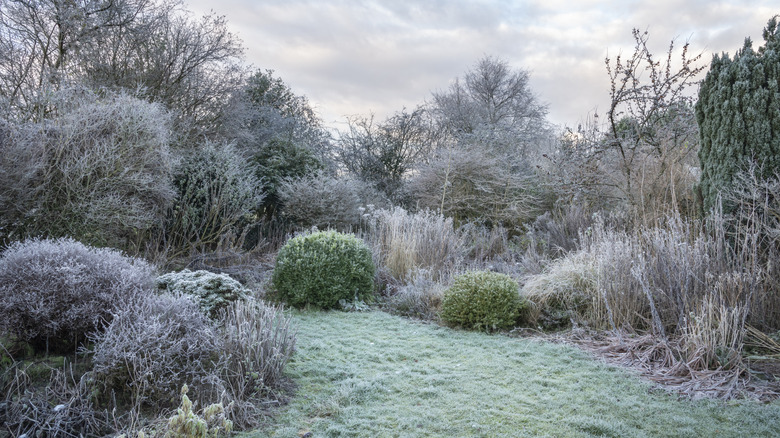Our Professional Gardener's Tips For Dealing With Frost Heaving In Your Winter Garden
The garden in winter can be a wonderful sight. The resting, dormant plant life gives me hope for the coming of spring, and I love to see the garden in different winter weather, from snow to rain to frost. When the weather conditions are right, garden vegetation might be covered in hoarfrost. This is a phenomenon where water on plant surfaces freezes and forms beautiful ice crystals. Most garden perennials are fine after the first hard frost because they slowly go into a dormant state that preserves their energy. But, cold temperatures can also cause an undesirable condition in the garden: frost heaving.
Frost heaving happens when the moisture in soil freezes suddenly as temperatures drop quickly then thaws when temperatures rise again. These fluctuations cause the water in soil to expand and contract, which can disturb roots and push plants up out of the ground, exposing the roots to damage from wind or cold. This is especially likely to happen with plants that have been planted recently (as their root systems are not yet established) or when plants have a shallow root system (such as sedums, heucheras, phloxes, strawberries, dianthuses, and perennial herbs like oregano).
Although frost heaving can damage plants, it's easy to protect them by adding fresh soil and mulch or gently pushing the roots back into the ground. Prevent this from occurring by planting at the right time, ensuring the soil drains well, and using a protective layer of mulch. Finally, continue to check on the plants, especially after freezing and thawing conditions occur.
What to do when frost heaving pushes your plants out of the ground
If you notice that your plants have exposed roots or have been pushed up out of the ground after frost heaving happens, there are some simple steps to take. If the soil is still frozen, gently add about 1 to 2 inches of fresh soil around the exposed roots. This will help protect the plant from damage caused by freezing winds or ice formation and also keep rodents from munching them. Then you can add a very light layer of mulch around the soil. Choose a lightweight type of natural mulch for this, such as pine straw (I like to use white pine needles) or shredded pine bark. Don't add too much mulch at this time; just enough to keep the soil in place.
If the weather is mild, the soil is soft, and you notice that frost heaving has uprooted one or more plants, you can very gently push the roots back into the ground and lightly cover them with soil. Don't tamp or press down on the damp soil too firmly, as you want to avoid compacting the soil. Then, add a layer of the lightweight mulch. Resist the temptation to do any major garden work at this time, even if the weather turns mild. Digging or relocating plants when the soil is wet can have a negative impact on soil structure, causing it to become compacted, which can make aeration and nutrient access more difficult.
How to prevent frosting heaving in the garden
Now that you know some tricks for rescuing plants that have experienced frost heaving, we'll brush up on some tips to help prevent it from harming your plants. Having well-draining soil is a good, basic way to prevent frost heaves. Add compost to improve the soil's drainage when planting in the fall. How much compost you should add depends on the amount of sand and soil in your garden. Also make sure not to plant perennials too late in the season. Planting at least six weeks prior to the first frost date in autumn will give them time to establish root systems, especially if you tend to have harsh winters.
Another important and effective form of prevention is to mulch newly planted or shallow-rooted perennials before winter begins. The mulch provides some insulation to lessen the chance of freezing and also lends weight to help keep the soil from pushing the roots up. A 4-inch layer of lightweight organic materials (such as shredded leaves or compost) can serve as a protective mulch layer after the first hard frost to help regulate root temperatures.
When there is extreme or intense winter weather, even healthy, well-draining soil can be disturbed and may expose the crowns or roots of plants, so check your garden after rapid freezing and thawing occurs. Get in the habit of taking a walk around the winter garden to check on the health of plants when you can. I try to do this every two or three weeks in winter as weather allows.


